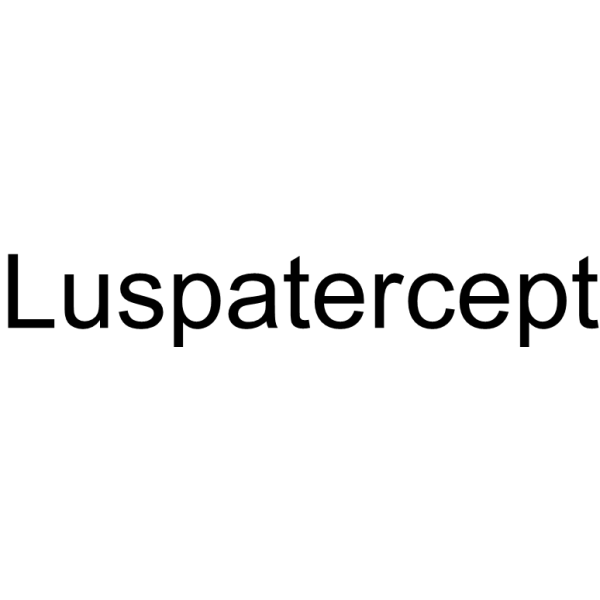Luspatercept
Modify Date: 2024-01-11 19:33:09

Luspatercept structure
|
Common Name | Luspatercept | ||
|---|---|---|---|---|
| CAS Number | 1373715-00-4 | Molecular Weight | N/A | |
| Density | N/A | Boiling Point | N/A | |
| Molecular Formula | N/A | Melting Point | N/A | |
| MSDS | N/A | Flash Point | N/A | |
Use of LuspaterceptLuspatercept (ACE-536) is a recombinant modified ActRIIB fusion protein that binds with transforming growth factor β superfamily ligands. Luspatercept increases the erythrocyte numbers and promotes maturation of erythroid precursors. Luspatercept binds with GDF11 and inhibits Smad2/3 signaling. Luspatercept can be used for the research of anemia[1]. |
| Name | Luspatercept |
|---|
| Description | Luspatercept (ACE-536) is a recombinant modified ActRIIB fusion protein that binds with transforming growth factor β superfamily ligands. Luspatercept increases the erythrocyte numbers and promotes maturation of erythroid precursors. Luspatercept binds with GDF11 and inhibits Smad2/3 signaling. Luspatercept can be used for the research of anemia[1]. |
|---|---|
| Related Catalog | |
| In Vitro | Luspatercept (0.1-1000 ng/mL) 抑制 A204 细胞中 GDF11 和 GDF8 诱导的 Smad2 和 Smad 3 信号通路[1]。 Luspatcept 与 GDF11,GDF8,activin B,BMP10 和 BMP6 结合[1]。 |
| In Vivo | Luspatercept (0.1-60mg /kg,皮下注射;10mg /kg,静脉注射;每周 2 次,共 8 周) 增加小鼠、大鼠和猴子的红细胞 (RBC) 数量、血红蛋白水平和红细胞堆积[1]。 Luspatercept (10mg /kg,皮下注射,1 次) 降低 C57BL/6 小鼠骨髓和脾脏中的红细胞形成单位 (BFU-Es) 和红血球形成单位 (CFU-Es)[1]。 Luspatercept (10mg /kg,腹腔注射,1 次) 抑制小鼠脾脏 Smad2/3 磷酸化[1]。 Animal Model: C57BL/6 mice[1] Dosage: 0.1, 0.3, 1, 3 and 10 mg/kg Administration: Subcutaneous injection and intravenous injection; 0.1-10 mg/kg (C57BL/6 mice, s.c.), 6-60 mg/kg (Sprague Dawley rats, s.c.), 0.4-30 mg/kg (cynomolgus monkeys, s.c.), 10 mg/kg, (cynomolgus monkeys, i.v.); twice weekly for 8 weeks Result: Dose-dependently increased the level of RBC, hemoglobin and hematocrit in mice, rats and monkeys. |
| References |
| No Any Chemical & Physical Properties |